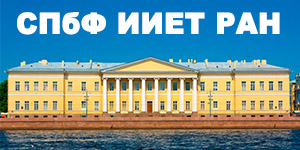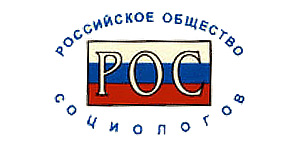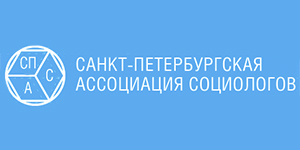Воспоминания о Роберте Мертоне
Кон Игорь Семёнович
Институт этнологии и антропологии РАН, Москва, Россия
ОПИСАНИЕ НА АНГЛИЙСКОМ ЯЗЫКЕ:
Remembering Robert Merton
Kon Igor S.
Institute of Ethnology and Anthropology Russian Academy of Sciences, Moscow
Senior researcher
Robert Merton was one of the first eminent sociologists of the 20th century I met. I saw and listened to him for the first time in early 1960s when he and T. Parsons came to Leningrad. But it was not a personal encounter. Most of all I was amazed by the clarity of Par- sons’ lecture that sounded much simpler than his writings, and his pronunciation was very good. Some years later, at an international congress I could hardly understand S. M. Lip- set’s speech and I attributed it to the bad acoustics. But my American colleague explained to me: “No surprise. Parsons comes from a rich family, was educated in an expensive private school, and Lipset is a Jewish boy from Brooklyn, so where could he have acquired good pronunciation?”
Of course, I read Merton’s books and found them interesting, mainly in terms of methodology. Likewise, his distinguishing between manifest and latent functions was of particular interest to me. At the 1966 congress of sociology in Evian, we were able at last to exchange several words in person, but there was little time for that. Parsons and Merton invited me for lunch (the only chance to speak face-to-face during the congress), but the previous session ended too late and I did not come on time, so instead had lunch in the company of young Peter Berger and Thomas Luckmann, which pleased me very much. Their book The Social Construction of Reality had just been published at the time and we found some mutual general ideas.
My personal contacts with Merton continued during the Varna world congress of sociology in 1970. During the closing banquet I passed around my proposal to set up a research committee for the history of sociology within the ISA. Parsons and Merton were the first to put their signatures and subsequently became members of the new Committee. That congress saw another significant event for us: V. A. Yadov, A. G. Zdravomyslov and I could invite Merton and Parsons to a restaurant, and moreover, we could pay for them. In capitalist countries we hardly had money, and so could only be guests.
Later on, Merton and I conducted brisk correspondence. At that time, Stanford found- ed its excellent Center for Advanced Studies. Several distinguished or promising researchers of various ages and from different disciplines (not only social scientists) were invited there for a year, provided with all of the necessary facilities for theoretical work, but not for empirical studies, and without any obligatory plans or terms. The only duty was to discuss their own as well as other fellows’ projects with researchers from different fields, and to theorize in general. Those informal interdisciplinary discussions were extremely fruitful for all participants. Obviously, the number of applicants to get there was huge (an opportunity of working for the entire year on your own project, and, besides, the prestige of that institution) but on Merton’s advice they sent me a personal invitation. Alas, it did not get through to me. The USSR Academy of Sciences declined it on my behalf without even letting me know about the fact. I only received from Merton copies of the correspondence between institutions. Unfortunately, these were lost in the ensuing years. In the early 1980s, the situation repeated itself. The Institute for Advanced Study was founded in Wassenaar, Netherlands and they sent me a personal invitation (perhaps again on Merton’s recommendation). But the External Affairs Department refused on my behalf without telling me about it. My case was not unique, however, as everyone could be treated in that brutish manner. This was one of the reasons for scientists’ growing hatred toward the Communist party and the Soviet power.
My correspondence with Merton was absorbing. He wrote long informative letters. We shared interest not only in the history of sociology but, for example, in the sociology of friendship as well.
Until the mid 20th century, ethnographic studies of friendship were mainly descriptive. It is only in the 1950s that scientists started to summarize and theorize these disparate data. The interdisciplinary seminar on friendship as a social phenomenon that was held in 1955, 1956 and 1958 in Harvard University played a very important role. A number of prominent anthropologists and sociologists — Robert Merton and Paul Lazarsfeld among them — prepared a large joint paper Lazarsfeld P. F. and Merton R. K. Friendship as a social process: a substantive and methodological analysis // Freedom and Control in Modern Society / ed. by M. Berger, T. Abel and C. H. Page. Princeton : Van Nostrand, 1954. Р. 18–66.
Merton worked out the substantive part of the friendship theory and Lazarsfeld established a pattern for its methodological analysis. When in the 1970s I took an interest in the sociology of friendship, I asked someone to send me a copy of that article. So Merton was very surprised that I knew about it.
Merton helped me a lot when I started to explore age groups. When he learned about my interest in that theme, he sent me a significant and expensive three-volume set (just published at that time) «Aging and Society» (1972) edited by Matilda Riley. Actually, it facilitated the emergence of age stratification as a special sub-discipline in sociology. I immediately published a positive review of it in Leningrad University’s periodical (see: Кон И. С. Рец. на кн: Старение и общество / под ред. М. У. Райли // Вестник ЛГУ. 1974. No 11. С. 159–160), which was not all that easy in those years.
And then a funny thing happened. In 1978, I contributed to «Социологические исследования», No 3 (“Sociological Studies”) a large article titled “Age Categories in the Sciences of Man and Society” where the entire text was devoted to setting out of a theory with an appropriate footnote (quoting the whole text or making several notes was impossible because of censorship considerations). I was absolutely infuriated when my only footnote was missing from the fresh issue of the journal! It looked as if I had taken ideas that were not mine. Generally speaking, the West, as a rule, did not pay much attention, if any, to Soviet plagiarism. One of our colleagues when publishing a collection of translated articles on modern American sociology removed the foreword written by Merton and put his own foreword, with several pages from Merton’s text. Nobody said anything about it. I could not put up with that, so I wrote an angry letter to A.G. Kharchev (editor of the Journal) where I demanded that a correction be published. What happened was a notification was placed in the misprint section two issues later saying that the footnote had gone missing from the very article due to an editors’ oversight (which probably was the case indeed). But who reads the corrections of misprints?
Among American sociologists, Merton had a reputation of a dominating leader: post graduates who declined his ideas and suggestions could not rely on his assistance. But he was friendly to migrants from the USSR. My former postgraduate student Dmitri Shalin emigrated to the USA in 1975, so I indirectly asked some of my colleagues in the West to help him, if possible, and they did it. During Dmitri’s stay in Rome, he was invited by Franco Ferrarotti, and Merton helped him get into graduate school at Columbia University, which enabled him to find his feet. American sociologists could not assess his Soviet dissertation on George Herbert Mead because nobody could read Russian. But after Shalin had published several papers in the leading sociological journals, Columbia University awarded him a PhD for his achievements as a whole, which was a rare case (though it was after Merton).
After Gorbachev’s perestroika, when it was possible to travel abroad (I came to the USA for the first time in 1988, but I received my first formal invitation in 1966), I met Merton regularly in the Russell Sage Foundation, in New York City. Even after he had left Columbia, he was there each Wednesday. He had an excellent memory. In the early 1990s, he tried to renew my previous invitation to Stanford, but I was 60 already, so it did not happen. During all my visits to New York, Robert and his wife Harriet Zuckerman, also a famous sociologist, invited me in the evening to a club, for men or for women respectively. It was intriguing and I enjoyed it.










